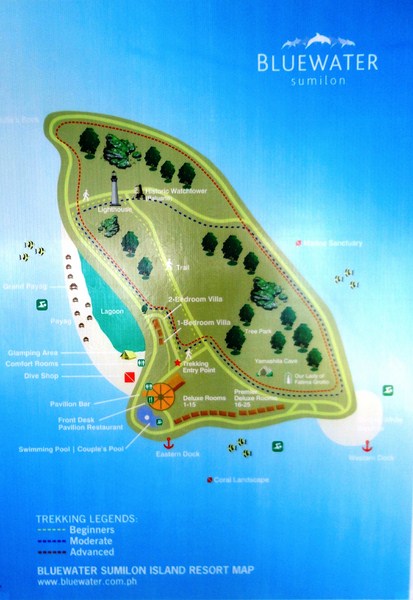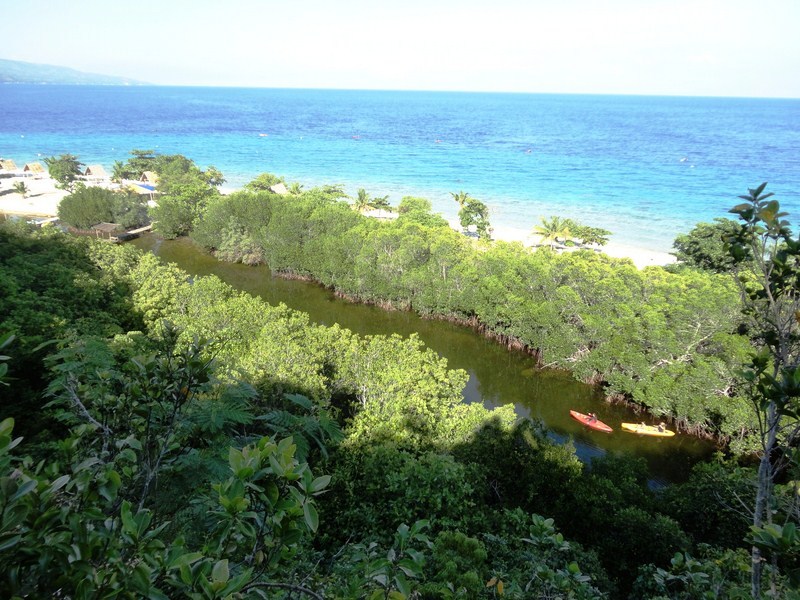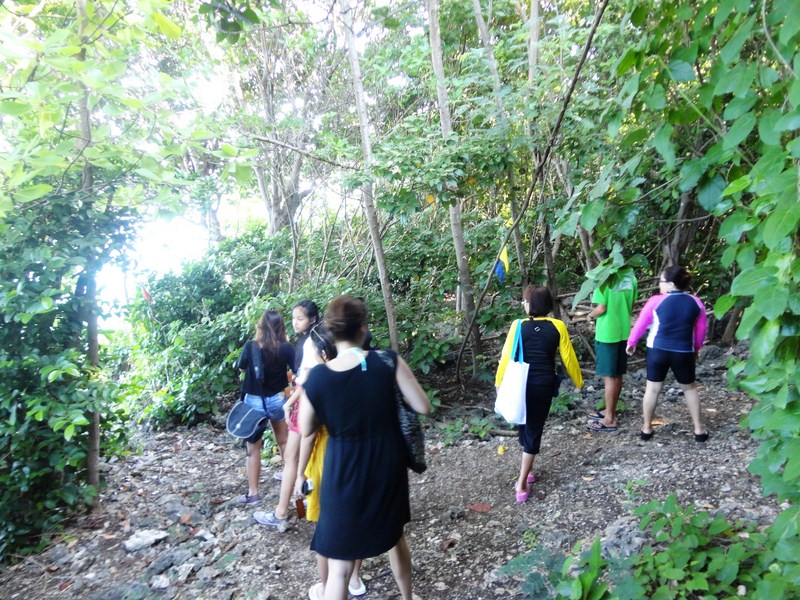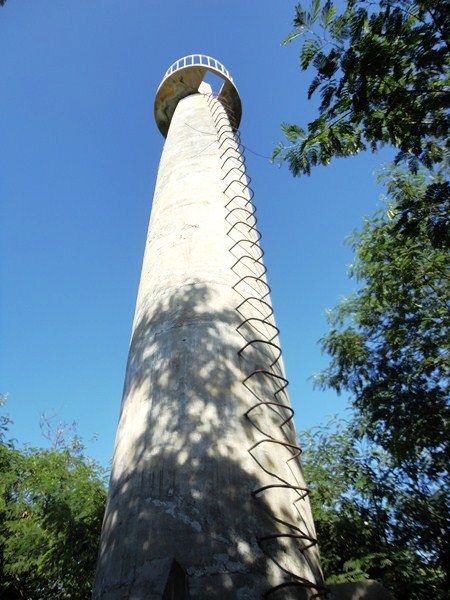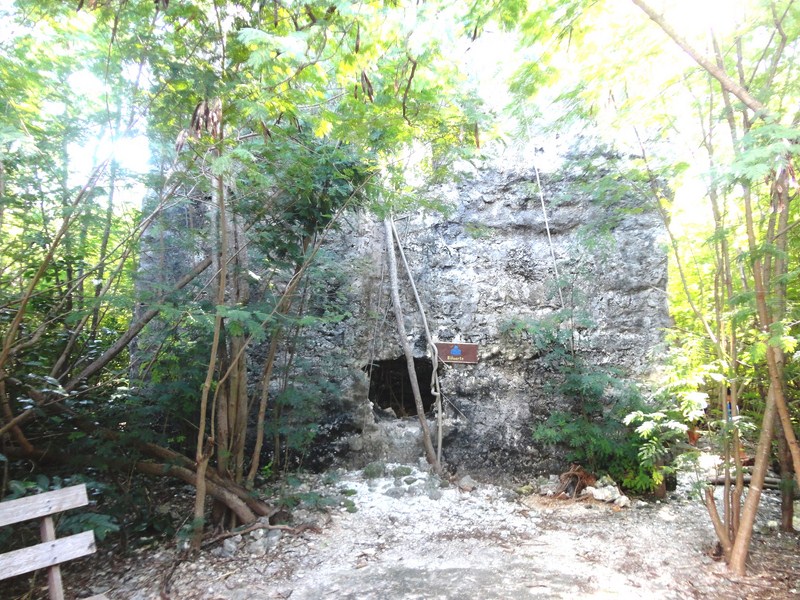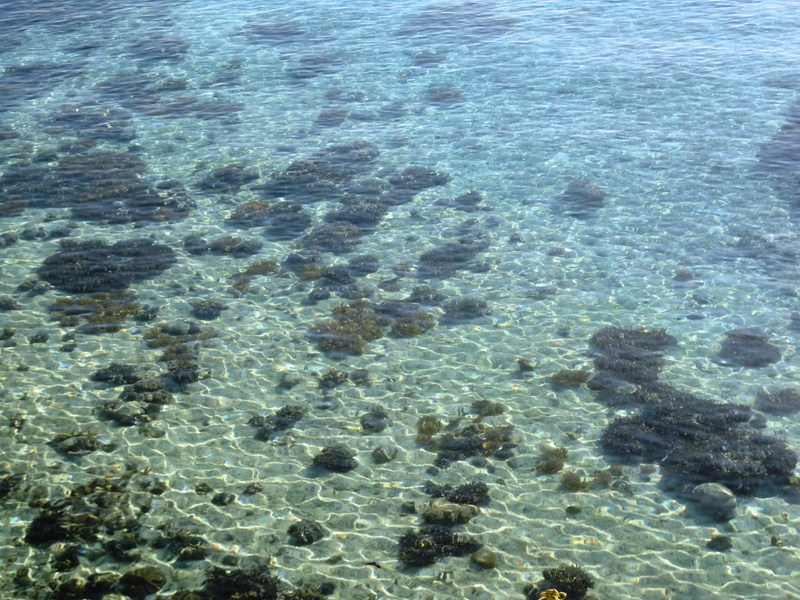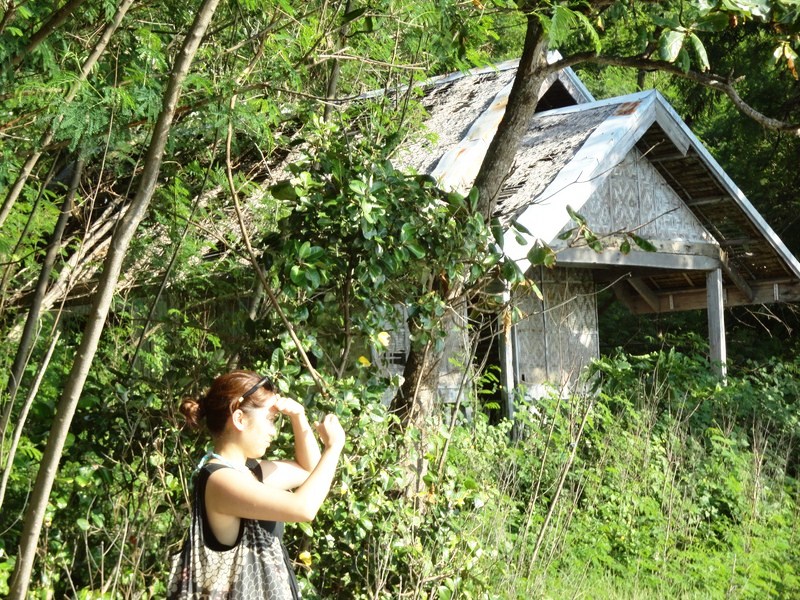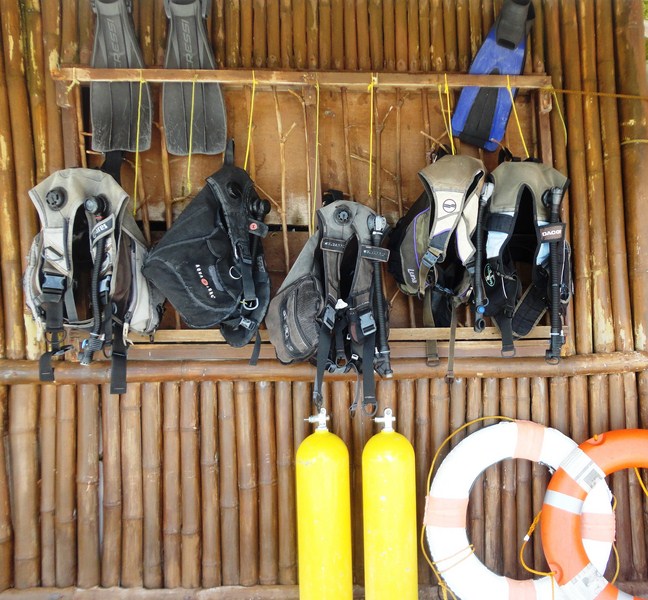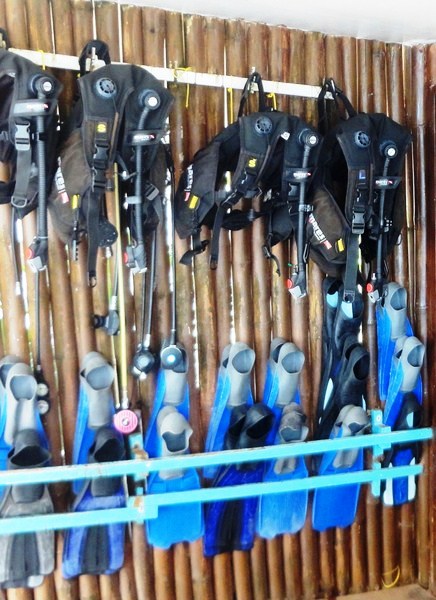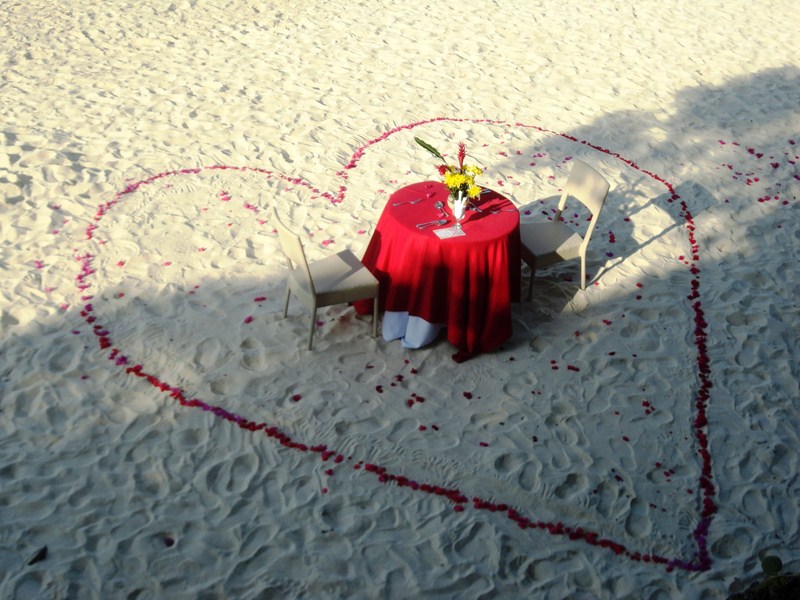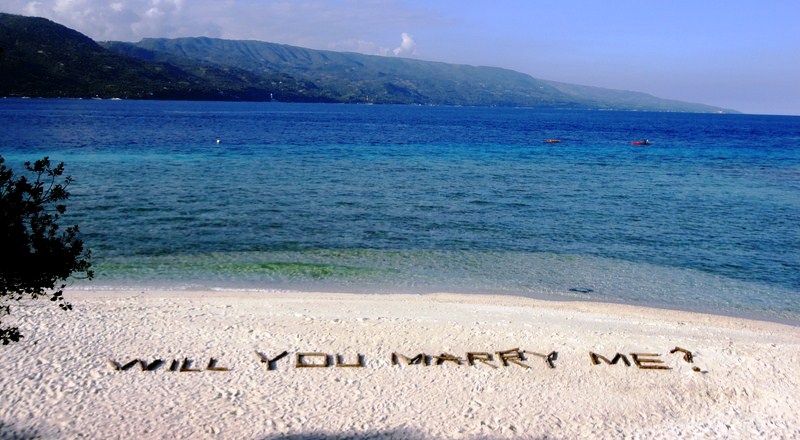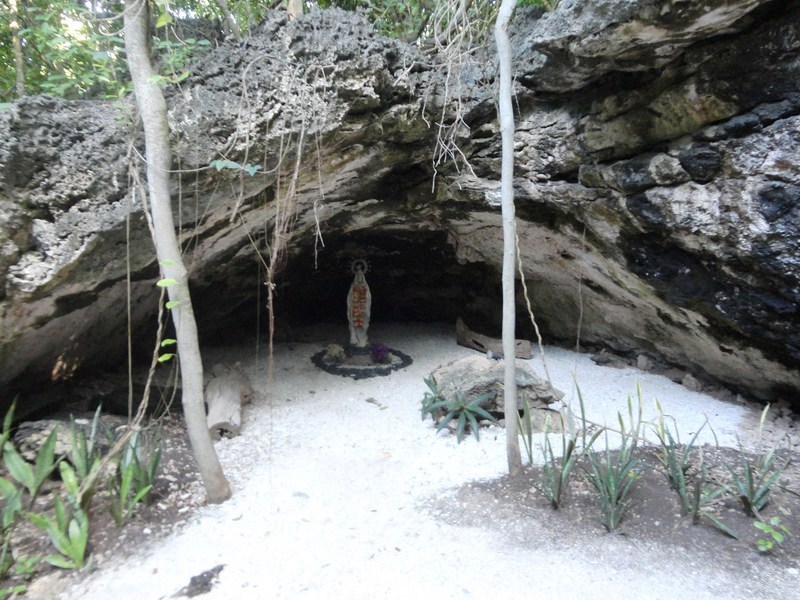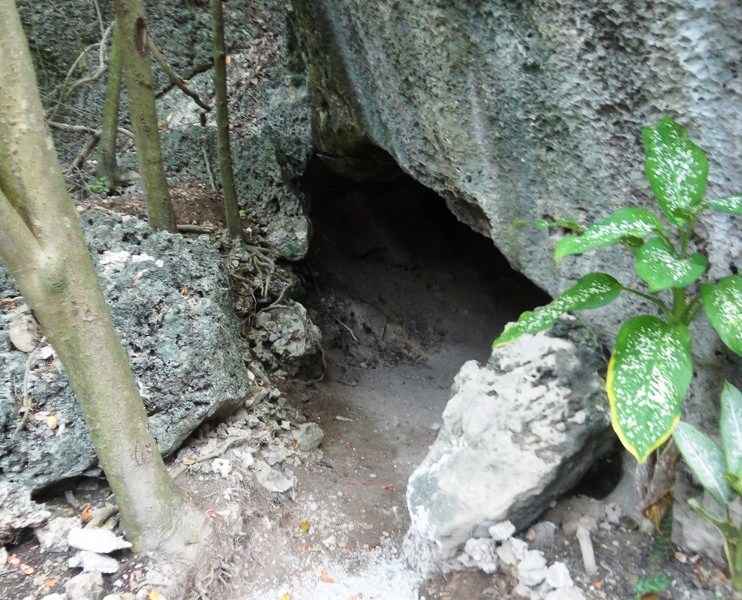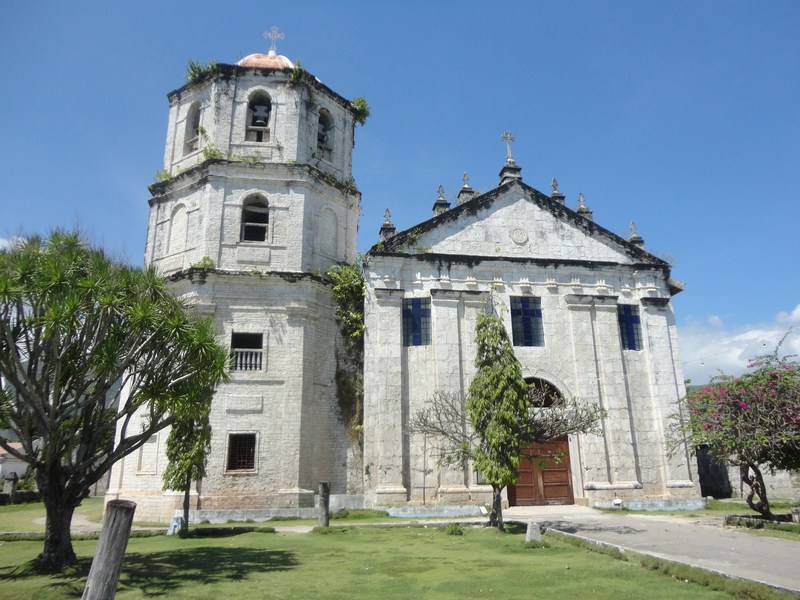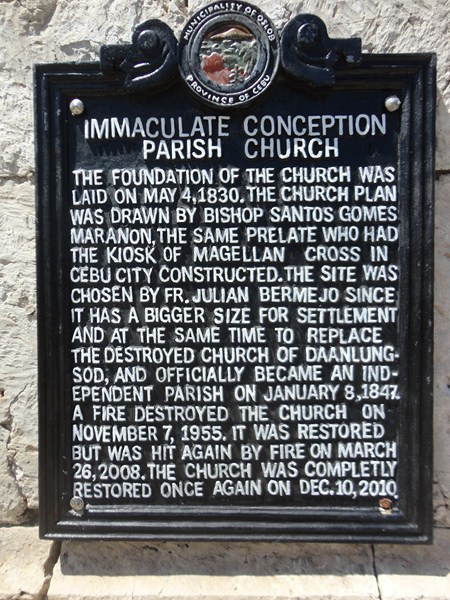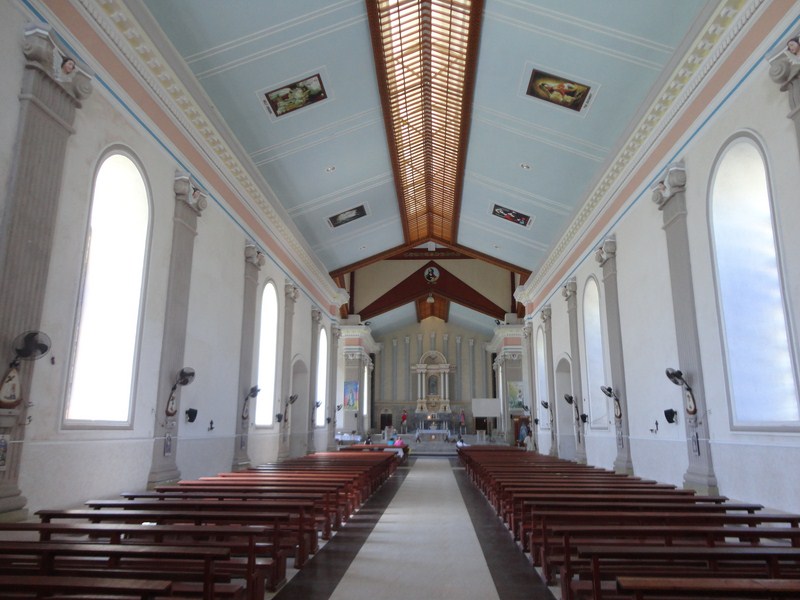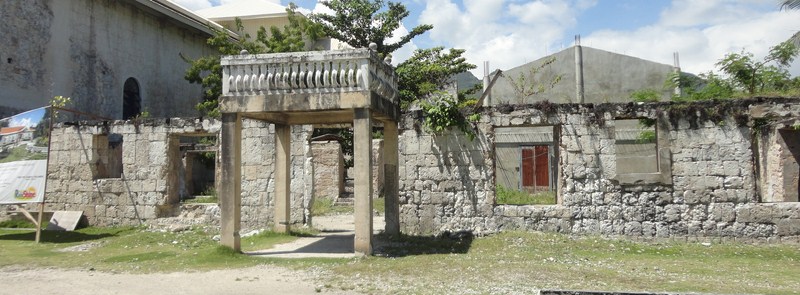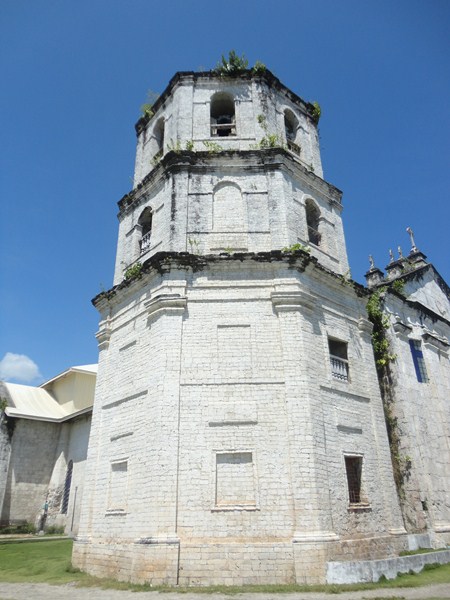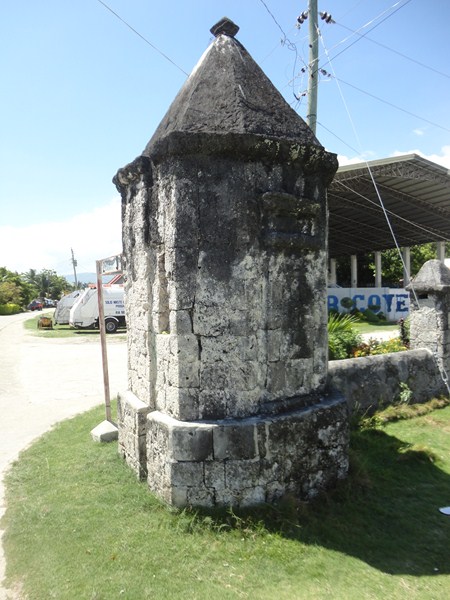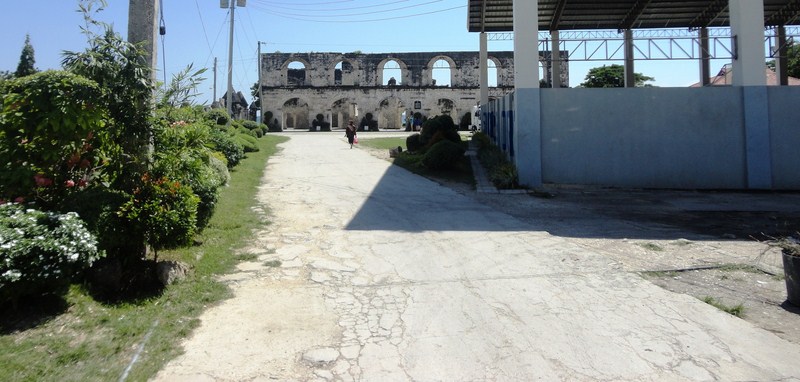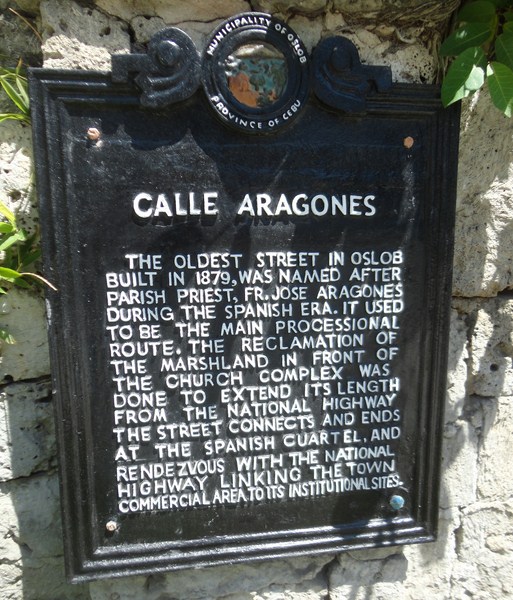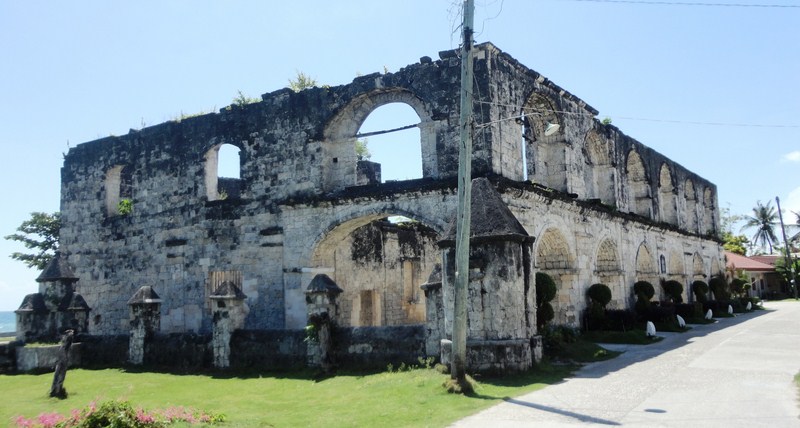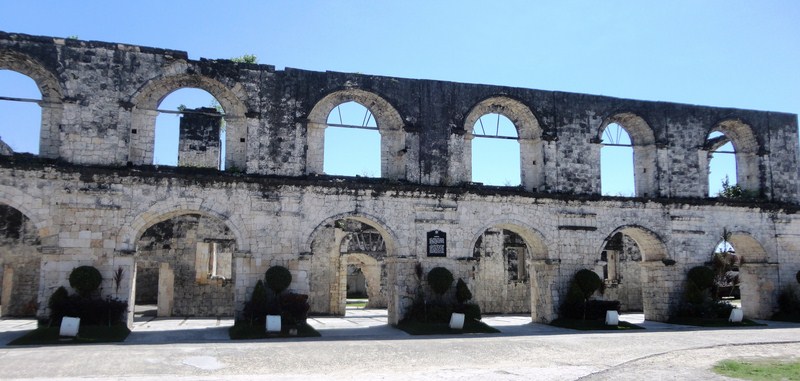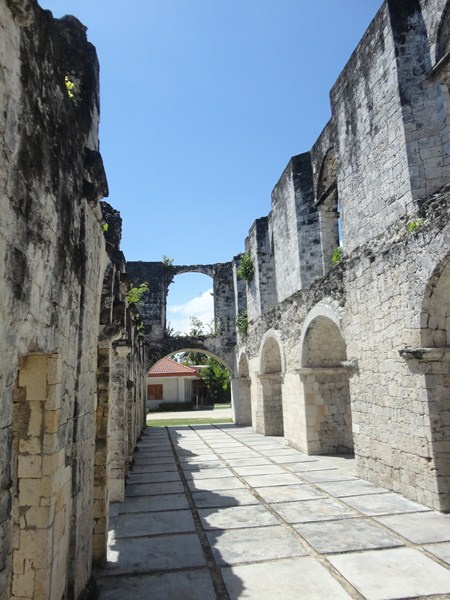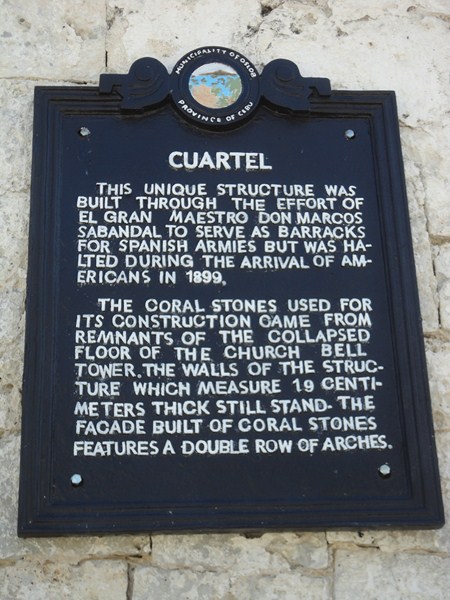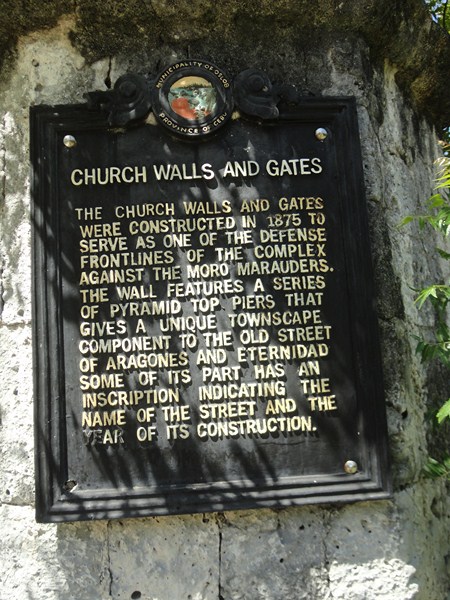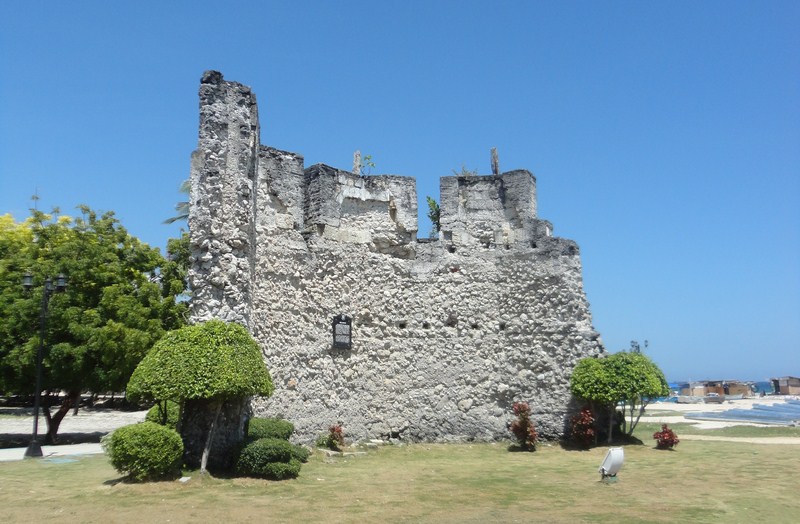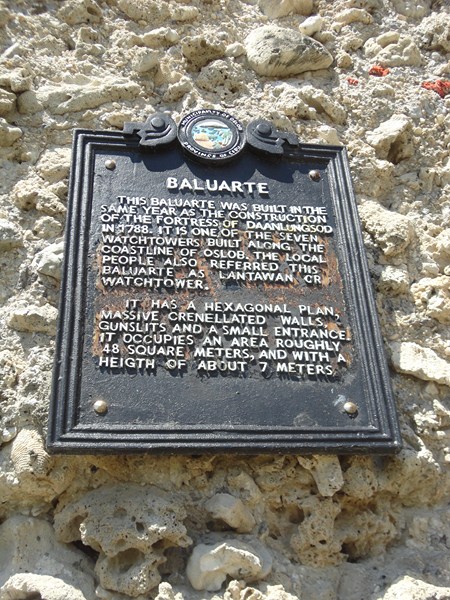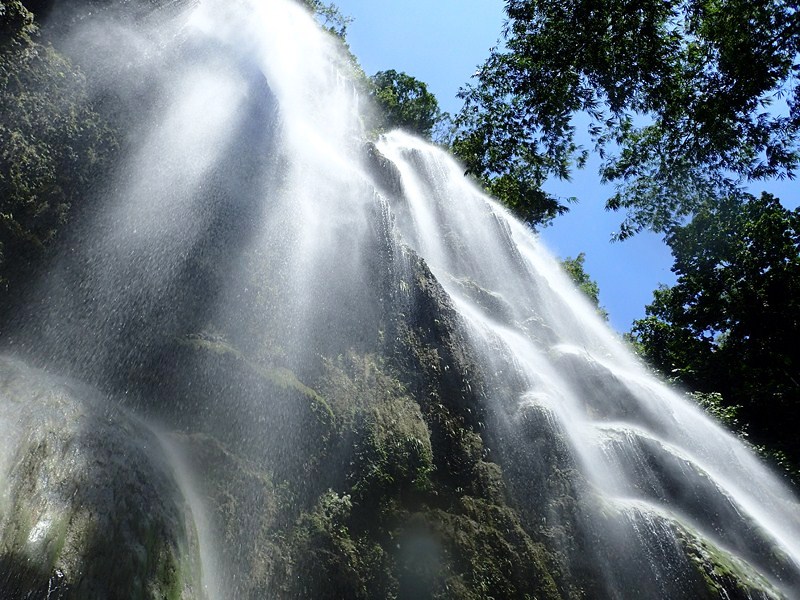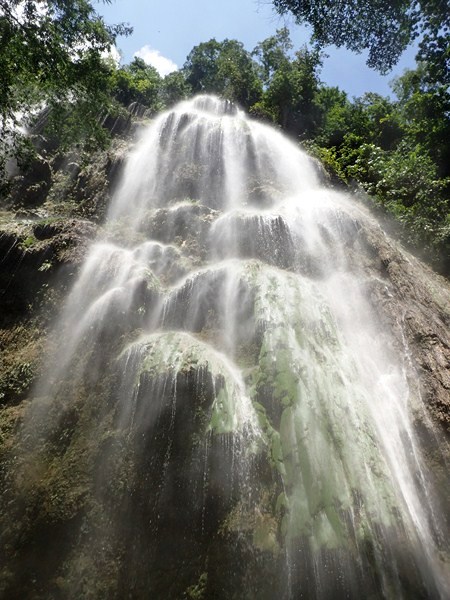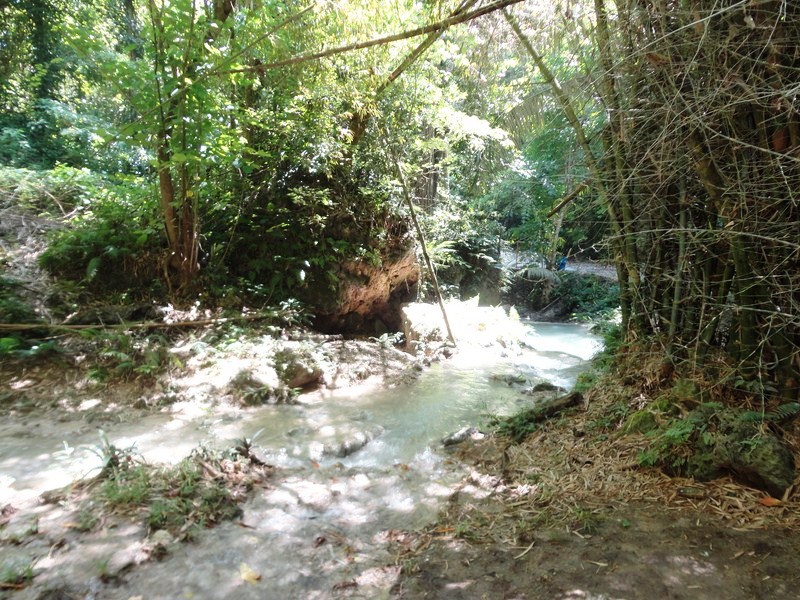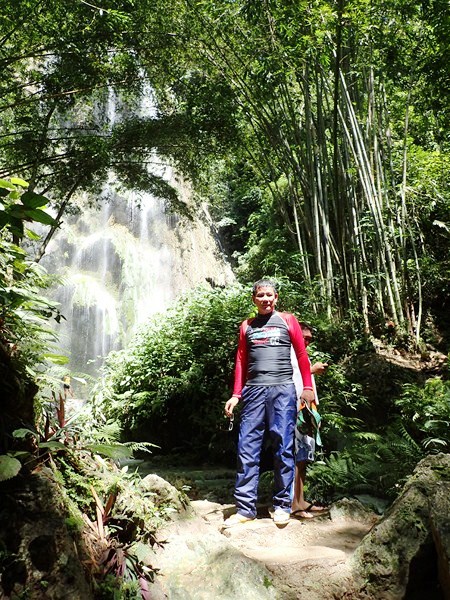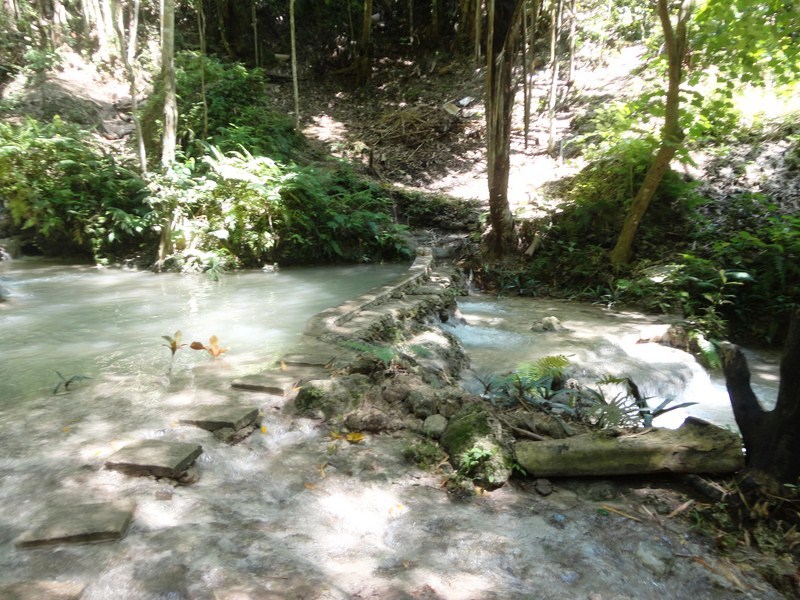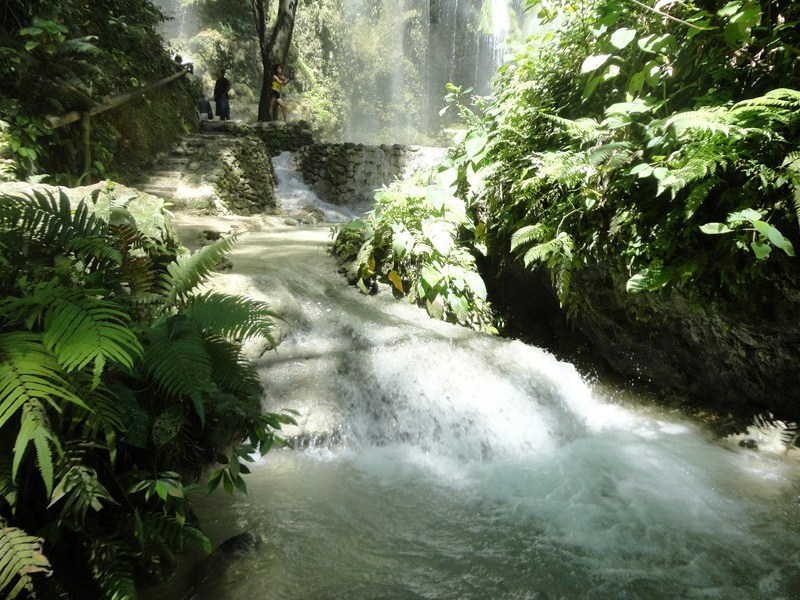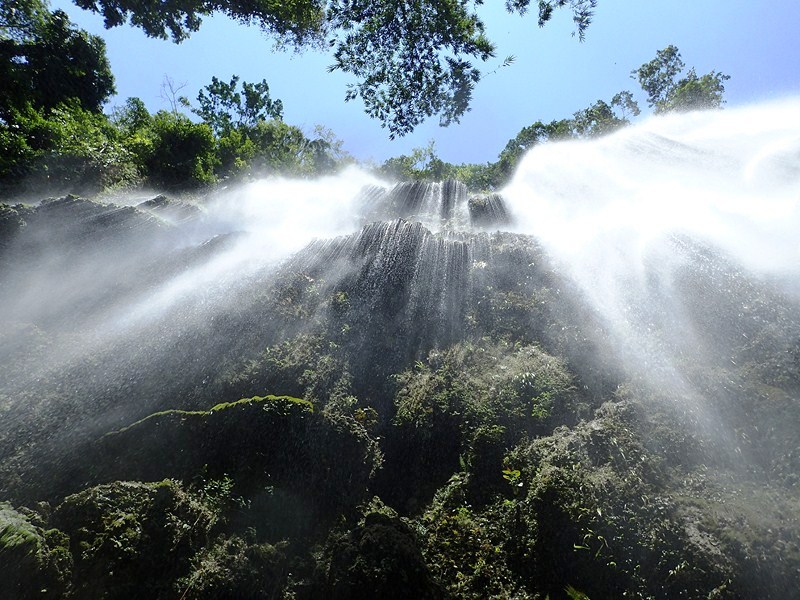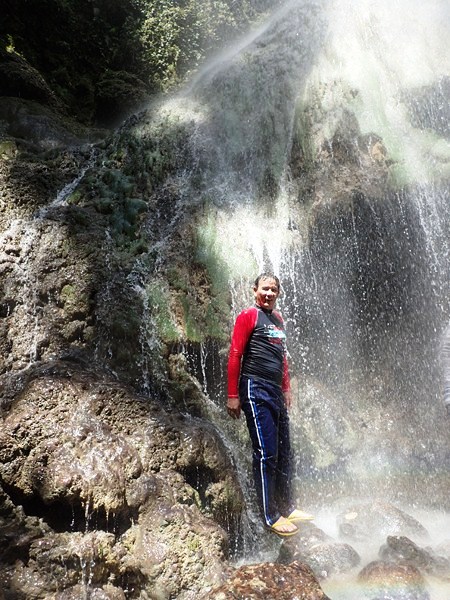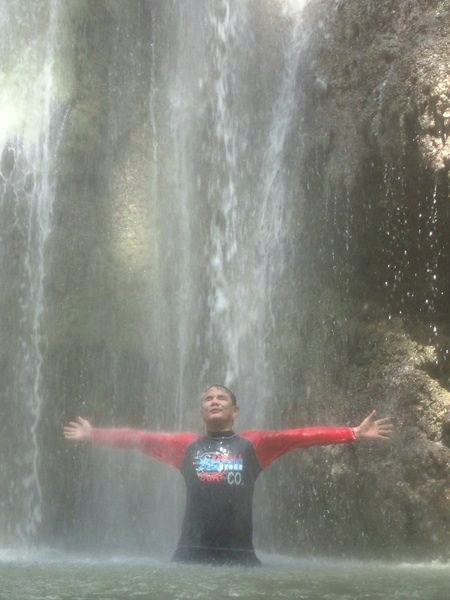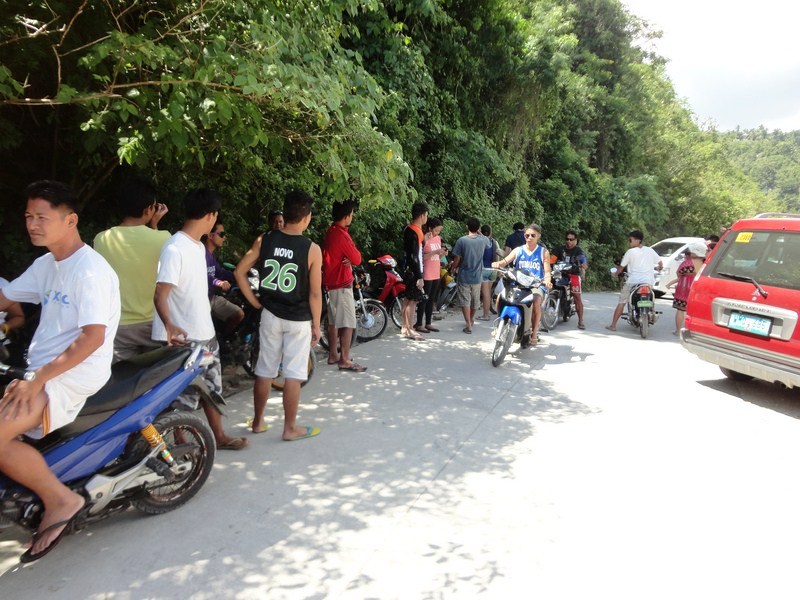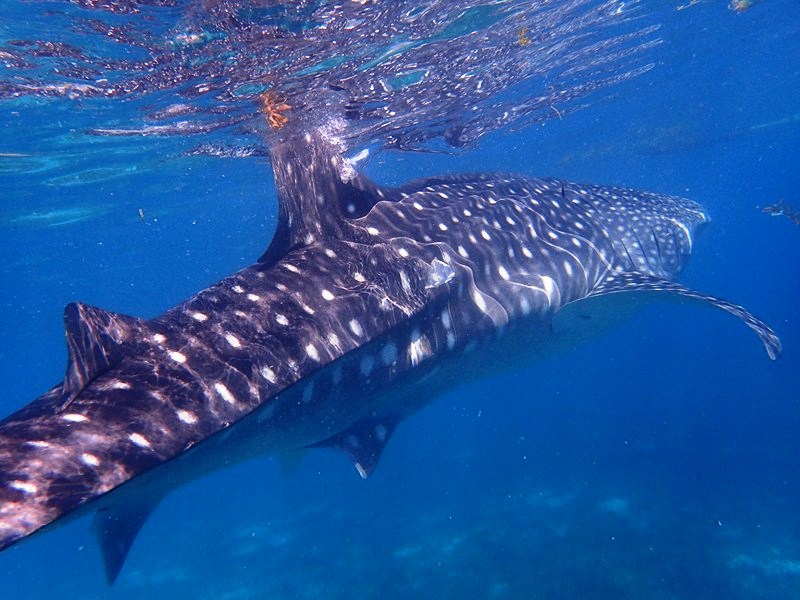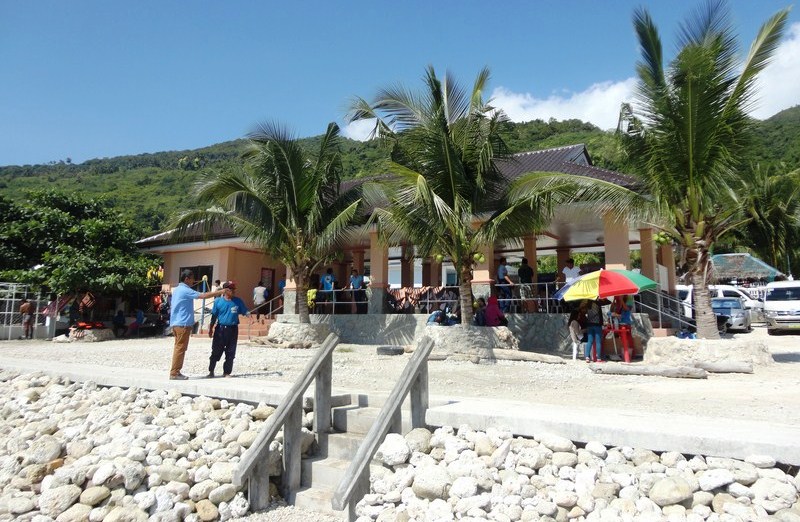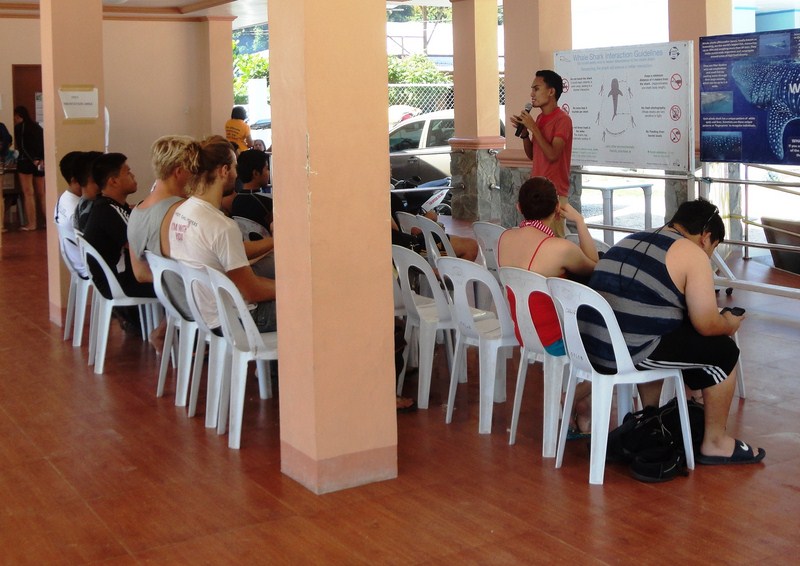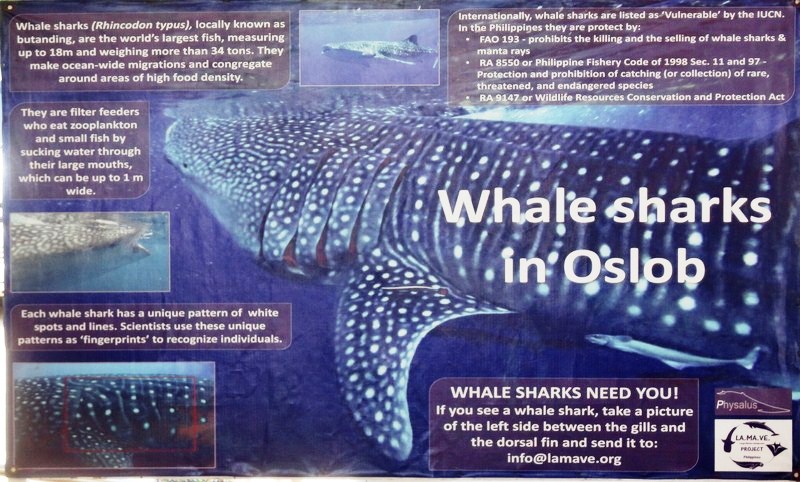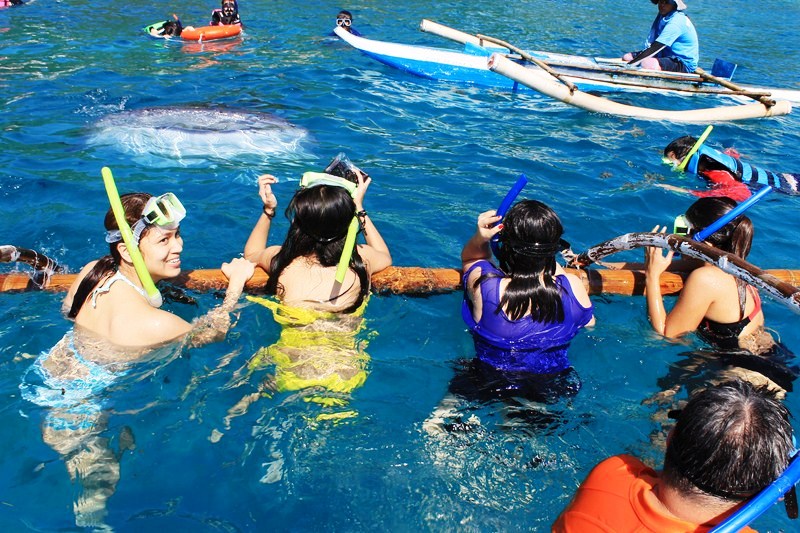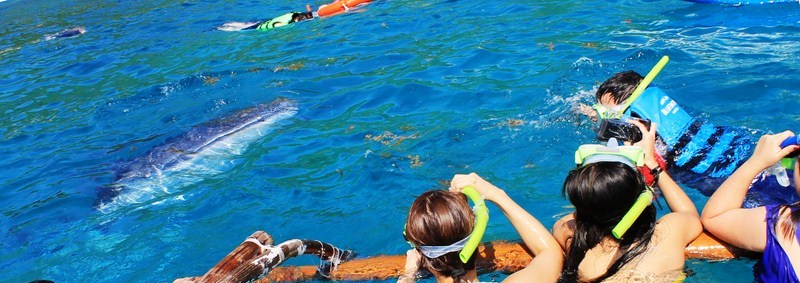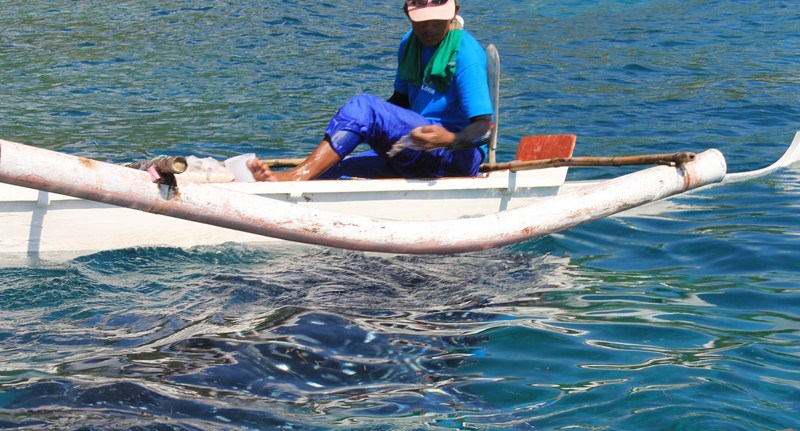After our lunch at the Island Pavilion Restaurant, Lara, Joy, Jimbo, Rachelle, Risa, Leica (Pete’s daughter) and I decided to burn some calories by doing a hike, with a resort guide, around the 24-hectare island. Liana and Kaycee opted to stay behind to rest.
The nicely laid out hiking trail (open from 6 AM – 4 PM) started as we descended the steps down from the restaurant and traversed the cliffside pathway, strewn with coral rock, overlooking the natural lagoon where we could see a number of guests kayaking. Soon enough, we entered the lush forest. Along the trail are colored pennants tied to trees that indicate the difficulty of the trail – yellow for beginners, blue for moderate and red for advanced.
Soon we reached a fork in the trail. The trail on the left traverses the northern point of the island where panoramic views of white sand beaches along the northwestern and eastern shores of the island can be seen. The trail on the right cuts through the spine of the island and leads up to the island’s highest point, 28 m. above sea level, where a lighthouse and a Spanish-era baluarte (watchtower) is located. We chose to explore this route.
The concrete lighthouse on the top wasn’t much. It didn’t have a hollow core with a spiral stairway leading to the top, a feature found in many lighthouses. Instead, steel, U-shaped ladder rungs imbedded in the concrete exterior was used.
The quadrilateral, heavily overgrown but still relatively intact baluarte was more interesting. It was part of a network of watchtower and fortlets, extending from Santander to Sibonga, built by Augustinian Fr. Julian Bermejo (pastor of Boljo-on from 1804-1836) to warn the townspeople of the approach of pirates. Lara and Joy entered the watchtower through a small, square hole in one of its sides.
From this vantage point, we now made our way down the trail to the pristine blue waters of the western side of the island where part of Sumilon Island Marine Park is located. Situated off Cebu’s southeastern coast, 5.5 kms. east northeast of Tanon Point, this marine sanctuary was formerly administered by Siliman University in Dumaguete City (Negros Oriental) as evidenced by a now abandoned hut of the marine station along this part of the trail. Today, the sanctuary is managed by the resort. Motorized water sports such as jetskiing and water skiing are not allowed to ensure that the sanctuary is not disturbed.
However, fine snorkeling, over coral gardens, can be done along the western, northern and eastern sides of the island. For scuba divers, it offers waters two to 5 m. deep and 200 m. wide and a drop-off about 100 m. off the southwest coast with spectacular underwater life including the big garoupa. Large schools of jacks, manta rays, sharks, barracudas, sea snakes, turtles and even an occasional whale shark can be seen off the northern and southern tip. Dive sites here include Coral Landscape, Garden Eel Plaza, Julie’s Rock and Nikki’s Wall. Diving season is all year round. Visibility reaches 30 m. and average depth is 20 m. with a maximum of 35 m.. Waters here are usually calm with strong currents to sometimes very rough, fierce and physically demanding currents. The resort has a dive shop (Aquamania) with certified dive instructors and extensive diving facilities.
Further down the trail, we soon reached the island’s white sandbar, the only part of the island that is open to the public. It shifts and changes its shape with the tides and the current. Here, we can swim, snorkel or sunbathe. It was also the setting for last night’s al fresco dinner. When we passed by, it was already set up for a marriage proposal, with a table for two, surrounded by flower petals shaped into a heart, set up along the beach. Nearby, along the sand, were the words “Will you marry me?” etched with pieces of tree branches.
On our way back to our cottages, we passed by a grotto with a statue of Our Lady of Fatima and, just past it, the short and seemingly man-made Yamashita’s Cave. We entered the latter and were surprised by a Halloween set-up, meant to scare visitors, at its very end. We were totally drained and drenched with sweat by the time we returned to our rooms.
Sumilon Bluewater Island Resort: Brgy. Bancogon, Sumilon Island, Oslob, 6025 Cebu. Tel: (032) 382-0008 and (032) 318-9098. Mobile numbers: (0917) 631-7514 and (0917) 631-7512. Email: info.sumilon@bluewater.com.ph.
Cebu City booking office: CRM Bldg., Escario cor. Molave Sts., Lahug, 6000 Cebu City. Tel: (032) 412-2436. Mobile numbers (0917) 631-7508 and (0998) 962-8263. E-mail: sales.sumilon@bluewater.co.ph.
Manila Office: Rm. 1120, Cityland/Herrera Towers, 98 Herrera cor. Valero St. Salcedo Village, Makati City. Tel: (632) 817-5751 and (632) 887-1348. Fax: (632) 893-5391. E-mail: sumilon@bluewater.com.ph. Website: www.bluewatersumilon.com.ph.

